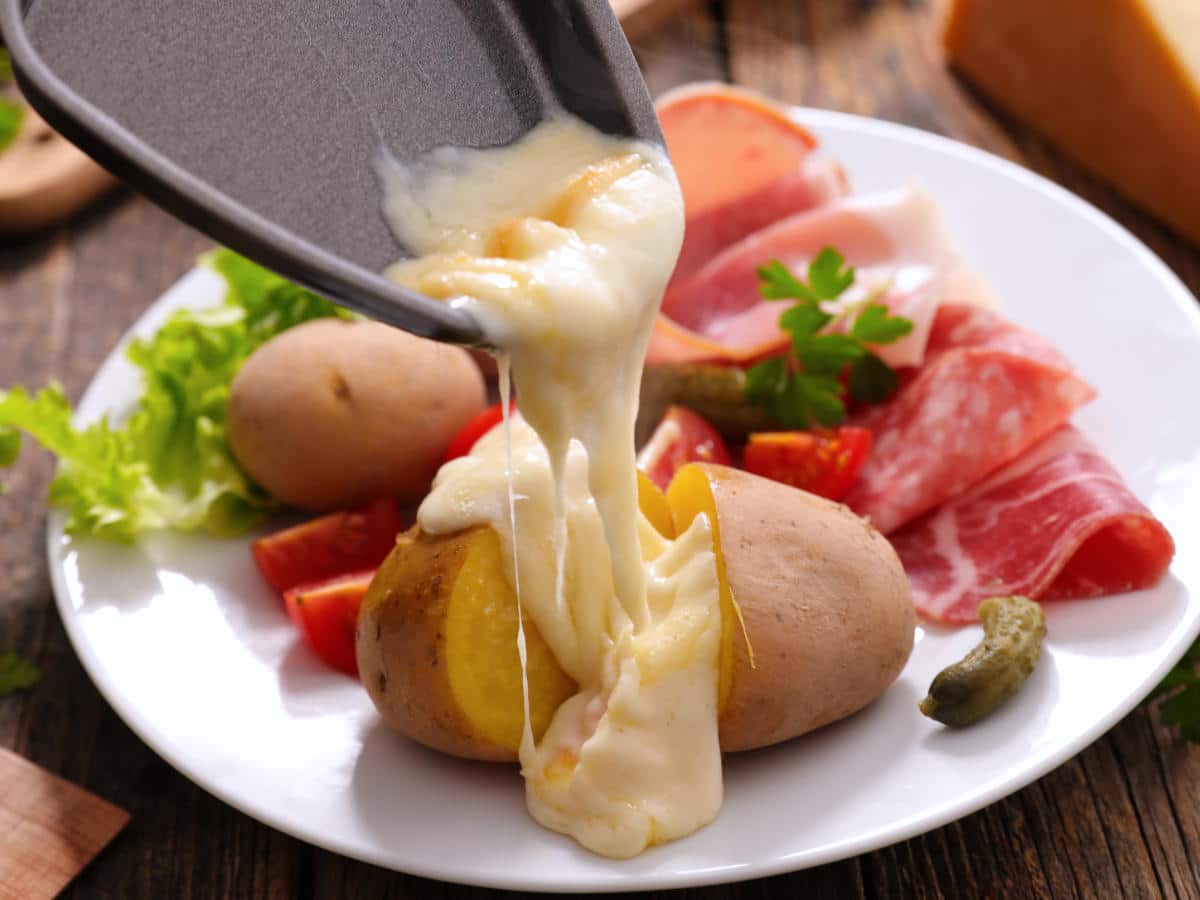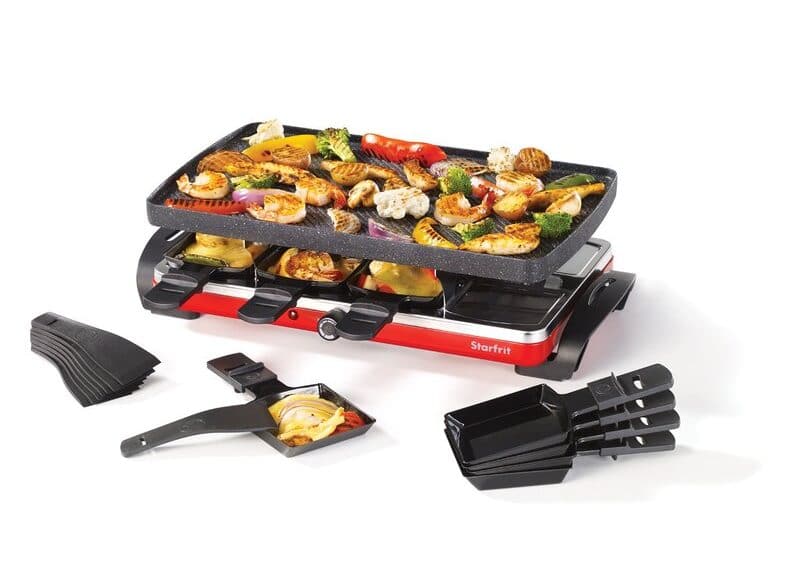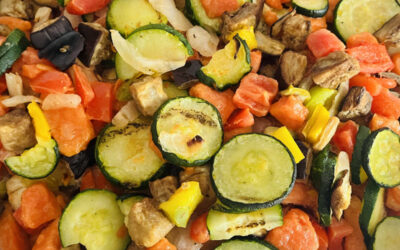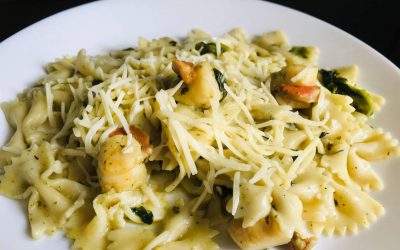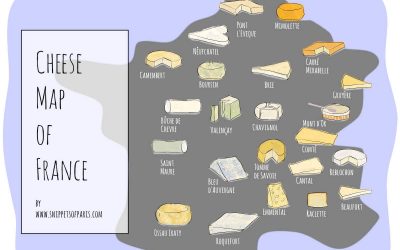You know the weather is starting to get cold in when a French person invites you over for a raclette. Note: Raclette may be Swiss, but France is the land of 1600 kinds of cheese. So it is no wonder that it has been quickly adopted by the French as a quintessential must.
If you are not sure what raclette is, you are in for a treat. It is one of those classic French foods that everyone falls in love with. As an ex-pat turned local, I acquired my first raclette grill set when my French OH moved in with the one he had since university. And we’ve not looked back ever since.
What is Raclette?
Raclette is a semi-hard type of cheese, traditionally made from non-pasteurized milk, although these days there are pasteurized versions. It originated in the Swiss Alpine region, and today is largely produced in the Auvergne and Savoie regions of France.
The cheese by itself is delicious, but it is usually eaten after it is melted and placed on top of potatoes and charcuterie (salt-cured hams). You can purchase raclette cheese here.
The Raclette Grill
There are two types of raclette grills, the ones you find in the restaurants and the ones most Europeans use at home. If you go to a restaurant in Paris or Geneva, this is the type of raclette grill you will find:
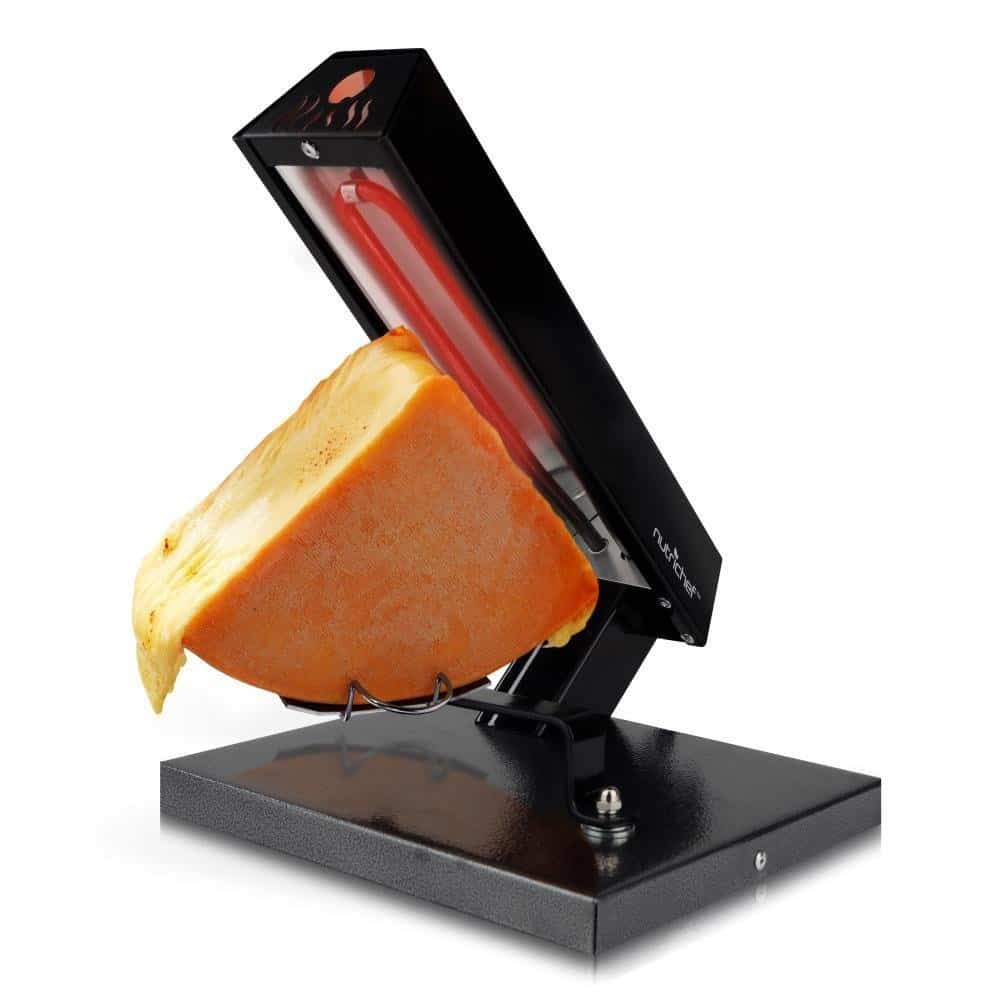
You can buy this type of grill at your local appliance store, but you need a large raclette cheese wheel to use it, and that may not be the easiest to find. It can get rather wasteful as well because if you are only 4-6 people, that is a lot of cheese!
Going to a restaurant will also be a lot more expensive (around €40-50/person), which is why most people tend to prepare raclette at home. The grill that most French people have at home is a lot less wasteful and looks somewhat similar to a plancha:
As you can see, it has small individual trays to heat slices of the raclette cheese. The cheese trays go on the bottom level, while the top part can also cook other food items. You can buy this type of raclette grill here.
Friends and family gather around the table and individually heat up their trays of cheese, serving themselves (with copious amounts of wine, of course).
☞ READ MORE: Easy Guide to the French Wines
Raclette vs. Fondue
Now, you might have heard of that other Swiss-French dish, the fondue. “Fondue” meaning melted, also involves a lot of melted cheese (or chocolate, but that is a different story).
There are some differences between the two, however:
| Differences | Raclette | Fondue |
|---|---|---|
| Serves | 4-12 people | 2-6 people |
| Type of Cheese | Raclette cheese | Mix of Conté, Beaufort, Tomme de Savoie, Gruyère, Emmental cheeses and white wine |
| Eaten with | Potatoes and Charcuterie | Bread and Veggies |
| Equipment | Raclette trays | Fondue forks |
Typically, the raclette is paired with potatoes, while fondue is paired with bread. You can, of course, add whatever vegetables and other ingredients such as broccoli, ham, sausages, etc. to either a raclette or fondue.
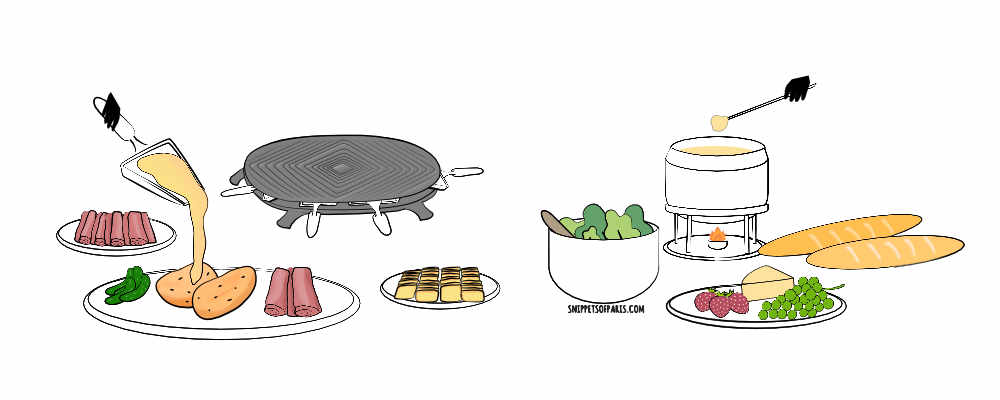
☞ READ MORE: ABC of French Cuisine (the Food Dictionary)
But the main difference, if you have small children is that the fondue usually is cooked with dry white wine (usually Savoie Apremont), and it hasn’t fully cooked off by the time kids eat it.
In addition, half the fun of the fondue is fishing out your bread from the cheese, but if you have small children, you want to be sure that they don’t burn themselves on the fondue. So in that sense, raclette is more family-friendly, since it is easier to move the small cheese trays onto your child’s plate.
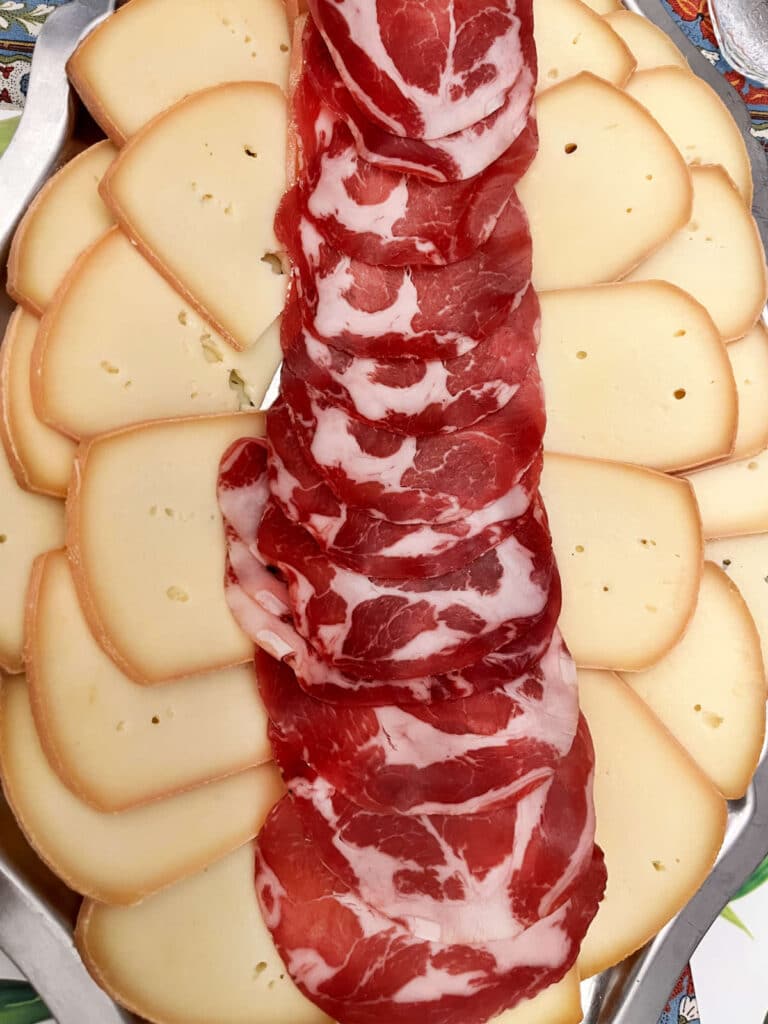
Raclette is also better for larger groups of people as you don’t have to prepare the cheese in advance like you do a fondue. In addition, the raclette grill can accommodate more people than a large fondue pot.
☞ READ MORE: Classic Cheese Fondue: Recipe & Tips from French Chefs
What type of cheese to buy?
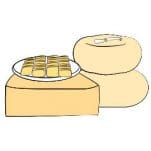
You can usually find packs of sliced raclette cheese at finer grocery stores such as Whole Foods and Trader Joe’s.
Raclette cheeses also come in flavors such as garlic, smoked, pepper, etc. Be sure to get a few different types, so that you can taste the difference.
What type of charcuterie should you use?
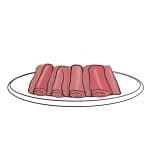
You can use any type of charcuterie you like, from cooked hams to salt-cured hams. Favorites are rosette, bacon, salami, and, coppa but other sausages, chorizo, slices of chicken or turkey also work well.
What to serve with raclette?

Raclette is usually served with potatoes, charcuterie, and gherkins in order to add a tangy flavor after the cheese.
A nice salad with vinaigrette is a lovely way to round off the meal.
What drinks to serve with raclette?

Raclette is usually served with white wines such as Vin de Savoie, or a Riesling from Alsace.
If you prefer reds, go for a light wine like Beaujolais. You can read more about French wines here.
How to use a Raclette grill?
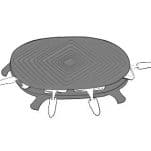
A typical raclette grill (with trays) requires very little preparation. Arrange it in the middle of the dining table, and turn it on.
Place the cheese on the tray and put it in the raclette and wait for it to start bubbling. Pour the cheese over boiled potatoes, once it is ready.
Similar recipes
- Lyonnaise potatoes
- Gratin Dauphinois
- Tartiflette
- Cheesy potato egg scramble
- Mushroom and potato gratin
- Pomme Aligot
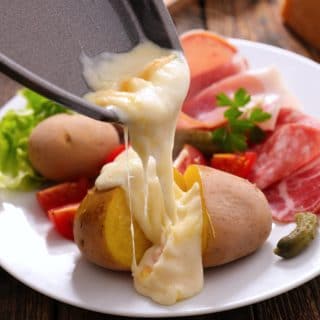
Raclette: Recipe & Ingredients
Ingredients
- 800 g of raclette cheese (5-8 slices per person)
- 1.5 kg of small potatoes
- 600 g of charcuterie (5-8 slices per person)
- 1 bottle of cornichons or gherkin pickles
- 1 baguette
Optional
- Veggies such as onions, broccoli, peppers, etc.
- Condiments such as capers, nuts, mustard, onion confit, fig jam, etc.
- Herbs like oregano, thyme, chives, etc.
Instructions
- Boil the potatoes in advance for 15-18 minutes.
- Set the table with the raclette grill in the middle, and all the ingredients around the table.
- Each person prepares his/her own plate, heating up the raclette cheese for 2-3 minutes in the cheese tray, until the cheese is bubbling.
Notes
Nutrition
Please note: We are not certified nutritionists and these estimates are approximate. Each individual’s dietary needs and restrictions are unique to the individual.
You are ultimately responsible for all decisions pertaining to your health. This website is written and produced for entertainment purposes only.

So are you ready to host a raclette party? If you enjoyed that, check out our other classic French recipes that are easy to prepare. You can also read more about hosting a fondue party here, as well as about preparing an apéro get-together here. Bon appétit and à bientôt !
